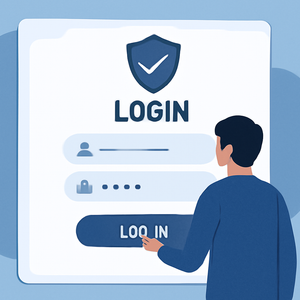Beyond the Inbox: Creative Uses for Gmail That You Didn't Know About

One of the most potent yet underappreciated features of Gmail is its labeling and filtering system. Users can create custom labels to categorize emails based on various criteria such as projects, urgency, or topics. For instance, a project manager might label emails concerning different phases of a product launch. By organizing emails in this way, users can easily track conversations and tasks pertinent to each project. Furthermore, Gmail’s filtering feature automates the organization process by directing incoming emails to specific labels based on pre-set criteria. For example, a marketing team can configure filters to automatically sort emails from specific clients or team members, ensuring that relevant messages are neatly organized. This not only saves time on searching through a cluttered inbox but also fosters improved collaboration among team members, as everyone can quickly access pertinent information.
Leveraging Google Drive Integration for Seamless Collaboration
Gmail’s integration with Google Drive significantly enhances its functionality as a collaborative tool. Users can attach files from their Google Drive directly into emails, which is particularly useful for teams working on shared documents or presentations. This feature eliminates the cumbersome process of downloading and re-uploading files, thus streamlining collaboration. Moreover, users can manage file permissions directly from Gmail, allowing them to control who can view or edit the attached documents. This capability minimizes the risk of version control issues and ensures that all collaborators are working with the most current information. For instance, a team drafting a research proposal can work simultaneously on a Google Doc while communicating via Gmail, enhancing efficiency and productivity.
Utilizing Tasks and Calendar for Efficient Time Management
Gmail is not just an email service; it can also serve as a powerful time management tool through its integration with Google Tasks and Google Calendar. Users can convert emails into tasks, complete with deadlines and reminders, ensuring that important follow-ups are not overlooked. Additionally, users can create calendar events directly from an email, facilitating the scheduling of meetings without the need to switch applications. For example, if a client requests a meeting via email, a user can click the “More” option and select “Create Event,” automatically populating the calendar with relevant details. This seamless integration encourages better time management and helps professionals maintain organization in their hectic schedules.
Gmail as a CRM Tool
For small business owners and freelancers, Gmail can function as a lightweight customer relationship management (CRM) tool. By utilizing labels, users can categorize emails based on client interactions, sales stages, or follow-up requirements. The ability to archive emails keeps the inbox uncluttered while still retaining essential communications for future reference. Third-party extensions like Streak or HubSpot can further enhance Gmail's CRM capabilities by integrating functions directly into the inbox. These tools allow users to track client interactions, manage sales pipelines, and automate follow-ups—all within Gmail. This approach saves time and provides a comprehensive view of client relationships without the complexities of dedicated CRM software.
Discovering Hidden Features: Add-ons and Extensions
Gmail also offers a variety of add-ons and extensions that can elevate its functionality. Users can explore tools like Grammarly for grammar and spell-checking, Todoist for task management, and Zoom for seamless video conferencing integration. These options can be accessed directly from the Gmail interface, allowing users to customize their email experience to fit their specific needs. For example, users can install the Trello add-on to create and manage tasks right from their email. This transforms Gmail into a project management hub, empowering users to handle multiple aspects of their work within a single platform. By leveraging these extensions, users can tailor their Gmail experience, making it an integral part of their productivity toolkit.
Gmail is often perceived as a basic email service, but its extensive range of features and integrations provides a powerful suite of tools for enhancing productivity and collaboration. By utilizing Gmail for project management, leveraging its integration with Google Drive, employing time management strategies, and exploring various add-ons, users can unlock a new level of efficiency in their daily routines. With a bit of creativity, Gmail can evolve from a simple inbox into a multifaceted platform that supports various aspects of both personal and professional life, proving that it is much more than just an email service. Whether you are a student, a professional, or a small business owner, embracing these creative uses of Gmail can significantly streamline your communication and productivity.
Productivity Tools Specialist
Tech companies, educational institutions, large corporations (e.g., Google, Microsoft)
Responsibilities
Assess and implement productivity tools, including Gmail and its integrations, to enhance team collaboration and efficiency.
Provide training sessions for staff on leveraging email management, task organization, and calendar functionalities.
Analyze user feedback to continuously improve tool adoption and usage.
Required Skills
Strong understanding of Gmail and Google Workspace features.
Experience in conducting training and support for software applications.
Excellent communication and organizational skills.
Digital Project Manager
Marketing agencies, IT firms, consulting companies (e.g., Accenture, Deloitte)
Responsibilities
Utilize Gmail, Google Drive, and project management tools to coordinate project timelines, resources, and deliverables.
Facilitate communication between team members through email updates and task management systems.
Track project progress and report on outcomes to stakeholders.
Required Skills
Proficiency in project management methodologies (e.g., Agile, Scrum).
Familiarity with digital collaboration tools and email workflows.
Strong analytical and problem-solving abilities.
Customer Relationship Management (CRM) Coordinator
E-commerce businesses, real estate firms, small to mid-sized companies
Responsibilities
Manage client communications via Gmail and maintain organized records of interactions using CRM tools integrated with email.
Develop and implement follow-up strategies based on client engagement and sales data.
Collaborate with sales and marketing teams to optimize client outreach efforts.
Required Skills
Experience with CRM software (e.g., HubSpot, Salesforce) and email marketing tools.
Strong attention to detail and ability to multitask.
Excellent interpersonal and customer service skills.
Email Marketing Specialist
Online retailers, digital marketing agencies, startups (e.g., Mailchimp, Constant Contact)
Responsibilities
Design and execute email marketing campaigns using Gmail and other marketing platforms to engage customers and promote products/services.
Analyze campaign performance metrics and adjust strategies for improved results.
Segment email lists and personalize content to enhance user engagement.
Required Skills
Proficiency in email marketing tools and analytics software.
Strong writing skills and an understanding of marketing principles.
Experience with A/B testing and campaign optimization techniques.
IT Support Specialist for Collaboration Tools
IT support firms, corporate IT departments, educational institutions
Responsibilities
Provide technical support for users experiencing issues with Gmail and other Google Workspace applications.
Assist in the setup and configuration of email accounts, filters, and integration with third-party applications.
Conduct training sessions to educate employees on best practices for using Gmail effectively.
Required Skills
Technical proficiency in Google Workspace and familiarity with common email issues.
Strong problem-solving skills and a customer-focused approach.
Ability to explain technical concepts to non-technical users.


